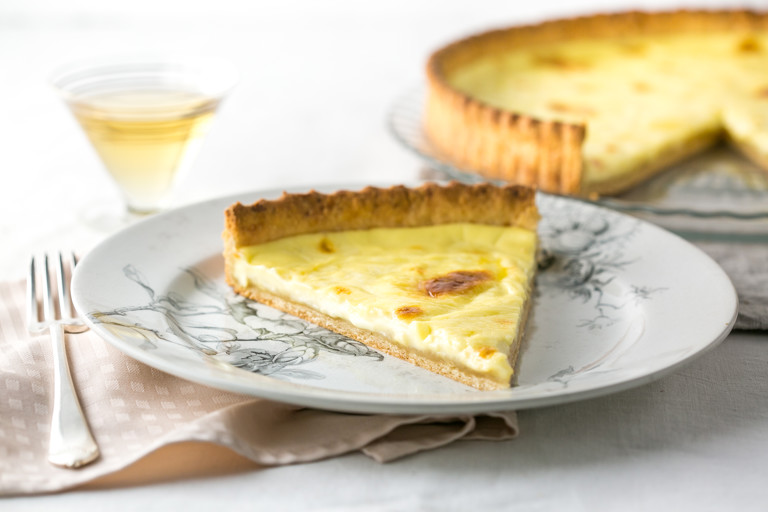La tarte Vaudoise à la crème - cream tart from the Vaud region
This stunning cream tart recipe hails from the canton of Vaud, Switzerland. The unusual yeasted pastry is very easy to work with, but adds a deliciously savoury contrast to the rich baked cream filling.
I can really get on board with Swiss cuisine. Impossibly lush Alpine dairy products enrich the food in all the right places. This tart is from the Vaud canton, a mountainous region north of Lake Geneva. Filled with lightly set cream on a gently savoury base, it reminds me of the English custard tart, but thinner, crisper, creamier, a touch more restrained.
The unusual pastry is made with fresh yeast and bread flour, but it is not risen, rather used straight after mixing. It bakes into a thin, crunchy, pleasingly saline counterbalance to the thickened, caramelised cream. This pastry is much easier to handle than shortcrust or puff, so it is very straightforward to roll out and it does not need to be blind baked.
Ingredients
Metric
Imperial
Yeasted pastry
- 75g of whole milk, lukewarm
- 15g of fresh yeast
- 220g of strong white bread flour
- 1 pinch of flaky sea salt
- 1 tsp golden caster sugar
- 100g of unsalted butter, softened
Cream tart filling
- 100g of golden caster sugar
- 10g of plain flour, (1 level tbsp)
- 400g of double cream
- 10g of butter, cut into very small pieces
To serve
- dessert wine, Nancy paired the tart with Douceur d'Automne Vin Doux
Method
Get in touch
Please sign in or register to send a comment to Great British Chefs.



